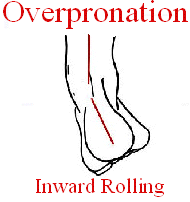Common Conditions
So… you want to know more about your feet? Here is a brief summary of the most common foot conditions that we see every day!

Pes Cavus
The high arched foot, often with a high instep. The 1st ray (metatarsal bone behind the big toe) is planter flexed (pushed more towards the ground), causing a ‘cave like’ appearance to a person’s foot, rolling them to the outside edge of their feet. Sometimes these feet are called supinators.

Supination
Sometimes called ‘under-pronation’, the foot tends to rotate inwards and down. Like pronation, supination is a normal part of gait and helps in the ‘push-off’. Many people who supinate tend to have more ankle sprains due to the outward rolling of their foot.

Pes Planus
Often called ‘flat feet’ the foot appears flat to the ground. Often associated with ‘fallen arches’ and over pronation. Not all ‘flat feet’ are problem feet.

Metatarsalgia
A term often used to describe pain in the ‘balls of the feet’. It may include such conditions as neuromas, capsulitis, synovitis, collapsed transverse arch and fractures.

Plantar Fasciitis
One of the most common foot conditions in North America. Often, people complain of pain in the bottom of the heel. Usually the pain is the worst in the morning, or after a period of rest. By the end of the day the pain may be replaced by a dull aching that improves with rest.

Varicose Veins
Varicose veins appear as thickened, bluish cords winding beneath the surface of your skin, mostly affecting legs and feet. Occasionally they are associated with capillaries that have filled with blood known as spider veins! When inflamed, Varicose veins can become tender and painful, compromising circulation leading to secondary problems like swollen ankles and ‘itchy’ skin.

Bunions
Bunions are typically an enlargement of bone or tissue at the base of the big toe. The big toe may turn in toward the second toe (Hallux Valgus), and the tissues surrounding the joint may be swollen and tender. Bunions can also happen on the ‘baby toe’, referred to as a bunionette or a Tailor’s Bunion. Bunions can be hereditary, and may be aggravated by poor footwear selection.

Over Pronation
Pronation is a normal part of a persons gait (the way we walk). It helps the foot to shock absorb while in motion When the ankle rolls inwards and foot angles out too much, it’s called Over-Pronation. This is often associated with the flat foot.
Edema
Pedal Edema is the retention of larger than normal amounts of fluid volume in the circulatory system or in tissues between the interstitial spaces in your feet and legs. Warm temperatures, high humidity, certain medications (examples include steroids, hormone replacements, non-steroidal anti-inflammatory drugs (NSAIDs) and others), sodium levels and various other factors can all affect swelling and fluid retention.
